

You can easily recognise the geometric moray by the dashed lines patterning its face. These mark its pores which are part of its lateral line system. This detects changes in pressure, letting the eel detect movement and vibration in the surrounding water.
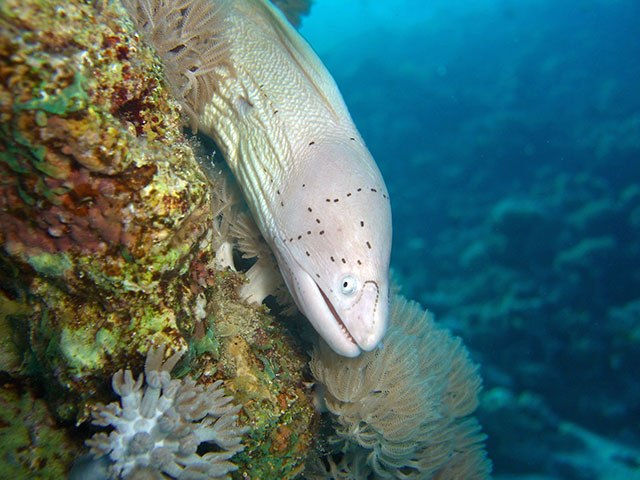
Quite small for a moray, the Geometric moray reaches 65 cm long. It lives at depths down to 40 m on coral and rocky reefs. You may see groups of up to 10 young eels sheltering in rock crevices. .
You find this eel throughout the Western Indian Ocean including the Red Sea, Madagascar, Mauritius, Oman, Mozambique, Seychelles and South Africa.
The eel has four nostrils. Two elongated front nostrils and two a little further back, which give it an excellent sense of smell with which to hunt prey.
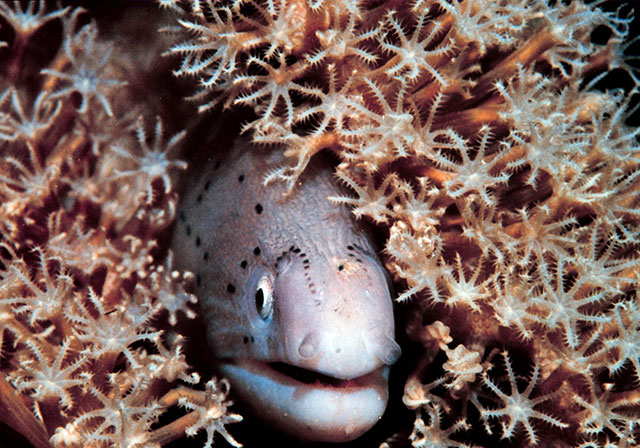
Morays live in holes and generally hunt by night. Moving with snake-like motions, they are extremely quick.
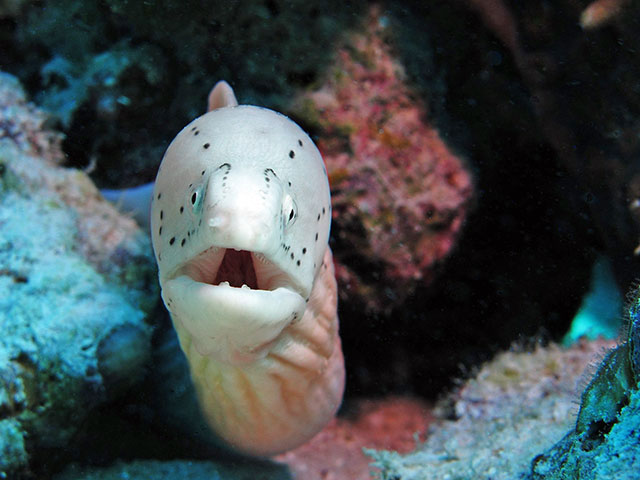
The geometric moray is a solitary hunter. It swims among the corals and rocks, occasionally poking its head into fissures and crevices searching for food. Without scales and covered in mucus it can slip into openings others can't. The eel flushes out small fish that cannot be reached by other hunters like groupers. Some groupers, and other types of hunter fish, hang around with the eels and snatch up fish driven out by the eels. This behaviour has been seen at several locations, but not always with the same species of fish. This makes it likely that the grouper and other hunters are copying the behaviour of others.
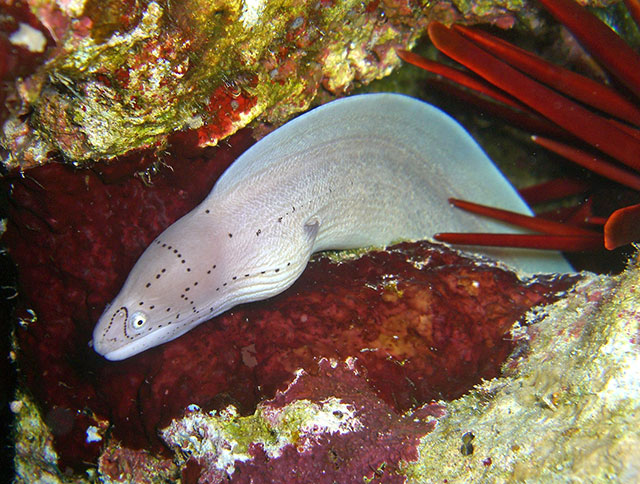
The grouper and other hunters like lionfish normally have their own territories, but they will leave these temporarily to associate with a hunting geometric moray eel. Observations suggest a much higher success rate for for strikes on prey with the eel's assistance than without. It's unclear if the eel benefits as well.
The geometric moray is hermaphrodite: both male and female at the same time. When mating, each geometric moray eel can act as either a male releasing sperm or a female releasing eggs. So far only one other moray eel is known which behaves like this.
When at rest you may see them rhythmically opening and closing their mouths. They do this to maintain a respiratory current past the gills.
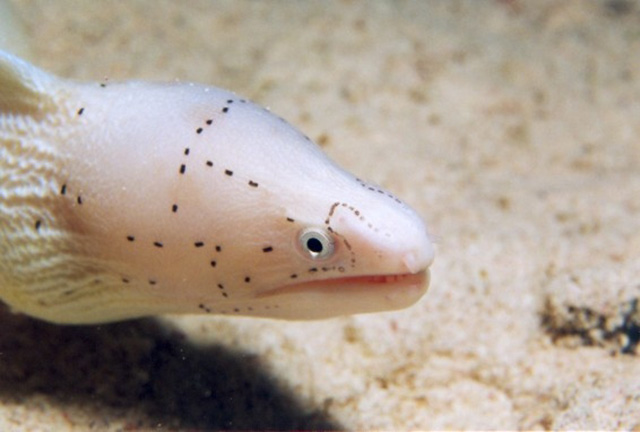
Helmut Debelius in his Red Sea Reef Guide says that the geometric moray eel is seen more often than any other moray eel. But after hundreds of dives in the Red Sea I have seen it only occasionally, unlike the ubiquitous giant moray. Has it become less common, or have I simply been diving in the wrong places or at the wrong times?
The Geometric moray, Gymnothorax griseus is also known as the Grey Moray, Peppered Moray, Snowflake Moray and Siderea grisea.
Class: Teleostei > Subclass: Elopomorpha > Superorder: Anguilliformes > Order: Muraenidae > Family: Muraeninae > Subfamily: Gymnothorax > Genus: Gymnothorax > Species Gymnothorax griseusEwald Lieske and Robert Myers, Coral Reef Guide Red Sea
Debelius, Helmut (2001). Red Sea reef guide
Diamant, A., Shpigel, M. Interspecific feeding associations of groupers (Teleostei: Serranidae) with octopuses and moray eels in the Gulf of Eilat (Agaba). Environ Biol Fish 13, 153–159 (1985). https://doi.org/10.1007/BF00002584
Functional hermaphroditism in teleosts, Yvonne Sadovy De Mitcheson,Min Liu. 2008
Five fascinating facts about geometric moray eels
Read more Creatures of the Month.